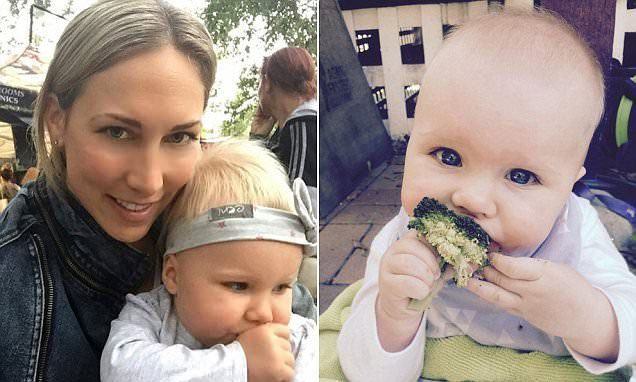Feeding baby solid food how many times a day
Balancing introducing solids with milk feeds
At around 6 months of age babies need to start having solid foods as well as breastmilk or formula. Find out how to get started with solid foods and what are the best foods to start with.
When to introduce solids?
At 6 months, your baby will still be getting most of their nutrition from breast milk or formula.
As you introduce solid foods, continue feeding with breastmilk or formula until at least 12 months of age.
Start to introduce solid foods at around 6 months of age when:
- your baby can sit up with support and has good head control
- your baby starts to show interest in food such as watching and reaching out when they see food
Even though some babies show these signs from an earlier age, continue to offer your baby breastmilk or formula if they appear hungry. This is usually all they need until around 6 months. It’s recommended that you don’t introduce solids before 4 months.
How to introduce solid foods into your baby’s diet
Start feeding your baby solids once a day. Your baby will take only small amounts of solid foods at first. Try one teaspoon at first of pureed vegetable, fruit, or rice cereal in between milk feeds.
From 6 to 9 months continue to give your baby breastmilk or formula first, then try solids after the milk.
From 9 months you can try to give solids first, then breastmilk or formula. This allows for your baby to naturally transition to solids by around 12 months.
At around 8 to 9 months try giving your baby solids as part of breakfast, lunch, and dinner.
Continue breastmilk or formula through the first year of life while foods are being introduced. From around 6 months you can try small amounts of cooled boiled water out of a sippy cup.
Which foods first?
From 6 months of age baby’s first foods should contain iron. Foods that have iron, include:
- iron-fortified baby cereals
- meat
- poultry
- fish
- legumes - lentils, beans, or chickpeas
Guidelines recommend that you can introduce foods in any order and at a pace that suits your baby, family, and cultural backgrounds, as long as some foods servings contain iron.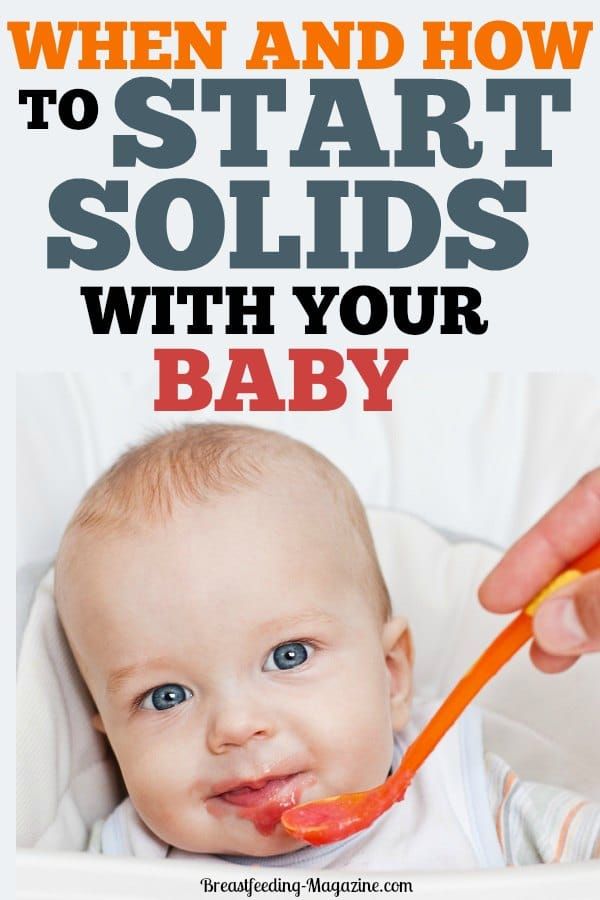
Your baby’s first foods can be smooth, mashed or have soft lumps.
Choose from the 5 food groups.
Vegetables and legumes
Give your baby cooked and pureed:
- pumpkin
- sweet potato
- carrots
- potato
- peas
- broccoli
- cauliflower
- zucchini
Over time puree them less so the texture gets lumpier.
Then introduce vegetables that are cooked but not pureed.
Fruit
Give your baby stewed and pureed:
- apples
- pears
- peaches
- apricots
- berries
Your baby might also like to try mashed ripe banana.
Gradually introduce pieces of cooked fruit, banana, peach and grated raw apple.
Avoid larger pieces of raw apple; babies can choke on them.
Grains and cereals
Give your baby fortified infant cereals (e.g. rice cereal) to start.
Move to cooked rolled oats, wholegrain breakfast biscuits (Weetbix, Vita Brits) or thick infant cereals.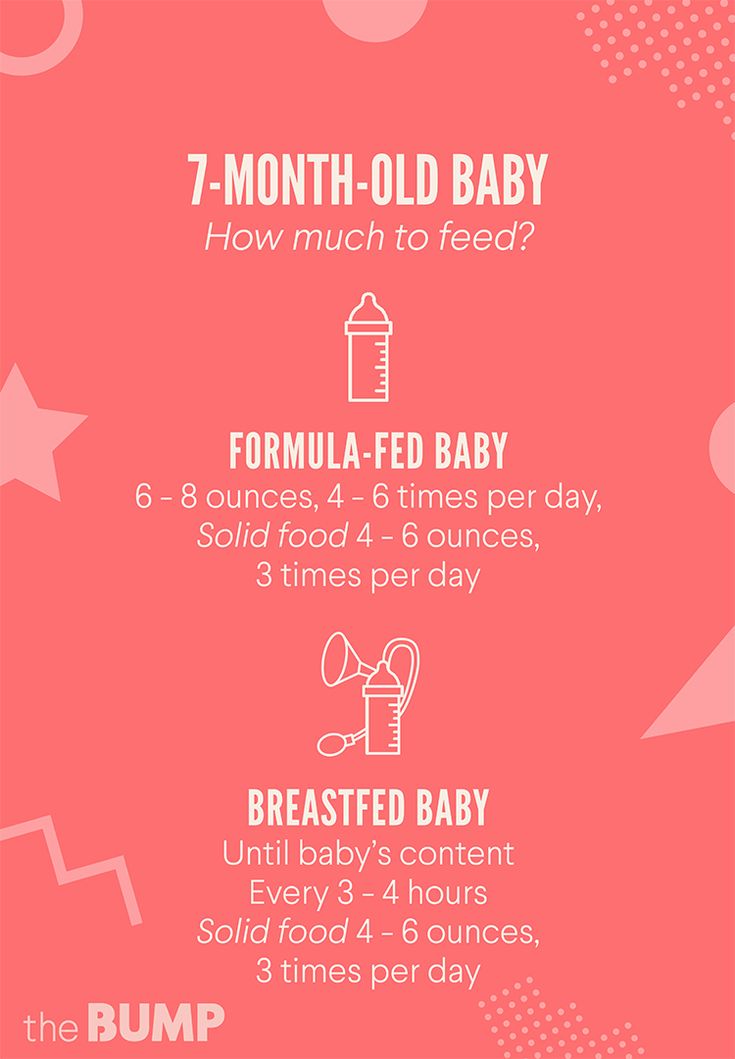
Don’t add sugar or honey or offer cereals with chocolate or added sugar.
Meat, fish, poultry, eggs, legumes, tofu
Meat, fish, poultry eggs, legumes, tofu should always be pureed when you start introducing solids.
When your baby accepts this, offer them bite size pieces of:
- chicken
- minced meat
- flaked fresh or canned fish (in spring water)
- mashed tofu
- mashed legumes
- scrambled or mashed boiled eggs
Don’t add salt. Also avoid processed meats as they have a lot of salt.
Milk, cheese, yoghurt
Formula should be used only until your baby is 12 months old. Then small amounts of milk can be added to foods like porridge. Breast feeding is recommended to continue until the age of 2 or longer.
Grated cheese is good in mashed vegetables.
Choose yoghurt without added sugar. Add fruit for extra flavour
What drinks should I be giving my baby?
After 12 months of age breastmilk, water (clean tap water or bottled water) and full fat cow’s milk should be the main drinks you offer your baby.
Keep breastfeeding for as long as you and your baby like.
Switch from formula to full fat ordinary cow’s milk after 12 months. Your child doesn’t need toddler milk products. Offer your baby a cup to drink from rather than a bottle. Your one-year-old should be exclusively drinking from a toddler cup.
From about 12 months, you can try rice milk and oat milk (fortified with at least 100mg calcium/100mL) if you want. But these drinks don’t have enough protein and vitamin B12. Your baby will need to have plenty of meat, poultry, fish, eggs, yoghurt, or cheese to make up for what they’re not getting from cow’s milk.
How much should I feed my baby?
Your baby will grow at different rates at different times. Their appetite can vary, even from day to day.
Babies don’t know what to eat but they know how much. Provide wholesome, healthy unprocessed food choices. Take your cue from your baby. Babies tend to turn away or lose interest when they’ve had enough to eat.
Finger foods and self-feeding
By 9 to 12 months, most babies like finger foods. Finger foods are foods they can hold themselves.
Some also like to hold their own spoon at that age. It will be messy! But learning to feed themselves is important.
By 12 months, your baby can eat the same healthy food you serve your family.
Foods to limit or avoid when introducing solids
There are some foods and drinks you should limit or avoid:
- coffee and tea, herbal drinks are not recommended
- fruit juice
- honey until 12 months (to prevent botulism)
- processed foods
- raw or runny eggs (bacteria in raw eggs can be harmful to babies)
- sugar sweetened drinks
- unpasteurised milks
Low-fat milks are not recommended in the first 2 years of life. Goat’s milk, sheep’s milk, soy milk, coconut milk and almond milk should also be avoided before the age of 2 unless your doctor recommends them.
Avoid small hard foods such as whole nuts and uncooked vegetables until 3 years. These can be choking hazards.
If your family doesn’t use animal products, your baby may need a vitamin B12 supplement. Discuss this with your doctor.
Seek help from your health care professional if you are worried about your baby’s eating or development.
Fruit — give your baby stewed and pureed apples, pears, peaches, apricots and berries, or mashed ripe banana. Gradually introduce pieces of cooked fruit, banana, peach and grated raw apple. Avoid larger pieces of raw apple; babies can choke on them.
Grains and cereals — give your baby fortified infant cereals (e.g. rice cereal) to start. Move to cooked rolled oats, wholegrain breakfast biscuits (Weetbix, Vita Brits) or thick infant cereals. Don’t add sugar or honey and don’t use cereals with chocolate or added sugar.
Meat, fish, poultry, eggs, legumes, tofu — make them pureed at the start. When your baby accepts this, offer them pieces of chicken, minced meat, flaked fresh or canned fish (in spring water), mashed tofu, mashed legumes, scrambled or mashed boiled eggs. Don’t add salt and avoid processed meats as they also have a lot of salts.
When your baby accepts this, offer them pieces of chicken, minced meat, flaked fresh or canned fish (in spring water), mashed tofu, mashed legumes, scrambled or mashed boiled eggs. Don’t add salt and avoid processed meats as they also have a lot of salts.
Milk, cheese, yoghurt — breast milk or formula should be used for up to 12 months, then small amounts of milk can be added to foods like porridge. Grated cheese is good in mashed vegetables. Choose yoghurt without added sugar. Add fruit for extra flavour.
How much?
Babies grow at different rates at different times. Their appetite can vary even from day to day.
Babies don’t know what to eat but they know how much. Take your cue from your baby. Healthy babies turn away or lose interest when they’ve had enough.
Finger foods and self-feeding
By 9 to 12 months, most babies like finger foods.
Some also like their own spoon at that age. It will be messy, but learning to feed themselves is important.
By 12 months, serve the same healthy food you serve your family, but without hot spices.
Encourage infants to feed themselves.
If you have stopped breastfeeding, switch to ordinary cow’s milk after 12 months. Use a cup rather than a bottle. Limit the amount of cow’s milk to around 500ml per day. Under health professional supervision, you can use full fat rice milk or oat milk with at least 100mg calcium per 100mL if you want, as long as other sources of protein are included (meat, chicken, fish, eggs, legumes or nut butters).
Your child doesn’t need toddler milk products.
If your family doesn’t use animal products, your baby may need a vitamin B12 supplement. Discuss this with your doctor.
Learn more here about the development and quality assurance of healthdirect content.
How Many Times a Day Should I Feed Solids to My 6 Month Old?
635 shares
It’s a common question from moms everywhere – How many times a day should I feed solids to my 6 month old?
Starting to feed your baby solid food is an exciting milestone! Many parents can’t wait to get started.
But how do you begin? When should you start introducing? How much should they be eating?
While it can all seem overwhelming, it certainly doesn’t have to be. While introducing can be fun, at this age most of your baby’s nutrition is still coming from milk (whether it be formula or breast milk).
We’ll go over some of the most frequently asked questions to get you started.
Disclaimer: This page contains affiliate links. See our disclosure policy for more details.
In This Guide:
How Many Times a Day Should I Feed Solids to My 6 Month Old?
Most 6 month old babies eat solids once or twice per day.
This depends on several factors, including when you introduce solids and how well your baby takes to them. Typically, solids are introduced at 1 meal per day, so if you are starting solids at 6 months, you’ll start there. If you began solids earlier at 4 or 5 months, your 6 month old may be eating twice in a day.
At 6 months old, your baby is still getting their nutrition primarily from formula or breast milk.
Also, it’s generally recommended to introduce foods one at a time and repeat them for a few days so you can pinpoint the source if your baby has an allergic reaction. So starting out with one feeding per day makes this easier.
RELATED Purées vs. Baby-led Weaning – Which is Better?
How Much Solids Should I Give My 6 Month Old?
At 6 months of age, your baby can eat 2-4 tablespoons of solid food per day.
They still have tiny stomachs at this age, they don’t need much. And you want to leave room because their nutrition is still coming primarily from formula or breast milk at 6 months old.
Try the same food for three days in a row before introducing something new. This makes sure your child doesn’t have any allergies or sensitivities to the food that has been introduced.
When Should I Introduce Water to My Baby?
You may start giving your baby water at 6 months old, however it isn’t necessary at that point.
Many moms like to introduce small sips of water during meal times with a miracle cup, straw, or sippy cup.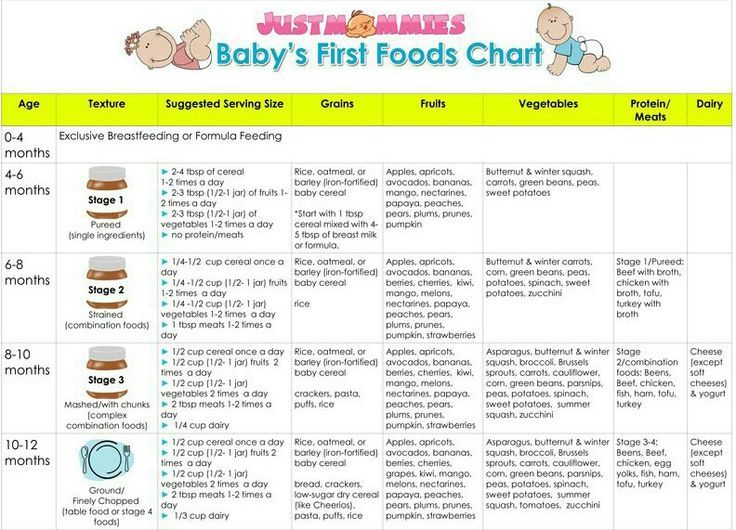 At this age, don’t let them drink more than one ounce during a sitting, and max two ounces throughout the day.
At this age, don’t let them drink more than one ounce during a sitting, and max two ounces throughout the day.
Even on hot days, as long as your baby is regularly drinking their formula or breast milk, they don’t need additional water at 6 months old.
What Finger Foods Can I Give My 6-Month-Old?
Think soft, chewable feeds that your baby can easily pick up.
- Sliced avocado
- Steamed carrots, cut lengthwise
- Banana chunks
- Cut tofu
- Steamed parsnips cut into chunks
- Halved blueberries
- Squished beans
- Cut tomato
- Small pieces of bread or pancake
- Pear slices
- Steamed sweet potato cut into chunks
- Cooked green beans
- Steamed broccoli
- Baked fish (bones removed!)
- Chunks of hard boiled eggs
What Is a Good Feeding Schedule for a 6 Month Old?
There isn’t one right feeding schedule for a 6 month old. The best schedule depends on your specific circumstances, so you’ll want to figure out what works for your family.
The best schedule depends on your specific circumstances, so you’ll want to figure out what works for your family.
This is just one example of a baby feeding schedule, 6 months.
| 6:30 am | Milk feed |
| 7:00 am | Get dressed and play |
| 9:00 am | Nap |
| 10:00 am | Milk feed |
| 10:30 am | Play |
| 11:00 am | Solids lunch |
| 11:30 am | Go for a walk |
| 12:30 pm | Nap |
| 2:00 pm | Milk feed |
| 2:30 pm | Play |
| 4:30 pm | Milk feed |
| 5:30 pm | Solids dinner |
| 6:30 pm | Start bedtime routine – bath, PJs, books |
| 7:00 pm | Milk feed |
| 7:30 pm | Bed |
Remember, you should figure out a time that works best for your family. Don’t overthink it too much – as they say, “foods before one are just for fun”.
Don’t overthink it too much – as they say, “foods before one are just for fun”.
Here are some things to keep in mind when trying to figure out a good feeding schedule for your 6 month old:
- Most 6 month old babies are feeding every 3 to 4 hours and taking 2 or 3 naps. Find the most convenient time to add in solids once each day and increase from there.
- Solids should not replace a feeding yet.
- Solids should be given at a time when the baby is very alert and, ideally, in a good mood. Depending on your schedules this could be at any time, but many people prefer to start out giving solids early in the day to allow plenty of time to observe for a reaction.
- If it’s tough to find a perfect schedule, don’t worry too much. This time passes quickly and your baby’s schedule will soon change again. Just keep trying.
When Should Baby Eat 3 Meals a Day?
Most babies slowly increase the amount they are eating and begin eating solids three times per day between 10 and 12 months of age.
They still aren’t full meals at this point, because a lot of their nutrition is still coming from breast milk or formula. Rather they are slowly transitioning from a milk-based diet to solid food and this gets them in the habit of eating regularly.
Can You Feed a 6 Month Old Too Much Solids?
It is considered uncommon to overfeed a baby though not impossible.
Take care to watch your baby for cues that they’re full. If they aren’t interested or are turning away, they may not be hungry.
How Do I Know When My Baby Is Full on Solids?
It can be challenging with easily distracted babies to know, but don’t try to force food.
Keep in mind again, that at 6 months, your baby is still getting most of their nutrition from breast milk or formula. The baby won’t eat enough solids to meet their nutritional needs, but overfeeding solids could mean they take less formula or breast milk than they should. For this reason, it’s generally recommended to give solids to your baby a little after their usual feeding, so they are still getting everything they need.
We hope this is a helpful resource to get you started and answers the question: how many times a day should i feed solids to my 6 month old?
And we also want to point out that if your baby isn’t interested in solids at 6 months, that’s perfectly okay too. Some babies take longer to get started than others. Jo’s second child didn’t even start eating solids until 8 months! Now she’s 5 and never stops eating.
How has your journey with introducing solid food been? Tell us about it in the comments!
635 shares
About Author
Jo & Rachel
Jo and Rachel first had the idea for 'The Moms At Odds' in 2016 when our babies were turning 2 and we realized that we were very different parents.
As a mom, Rachel immediately felt this strong connection to her son and instantly decided she wanted to become a stay-at-home mom. Though Jo obviously loved her son as well, she counted the days until she could go back to work and interact with other adults.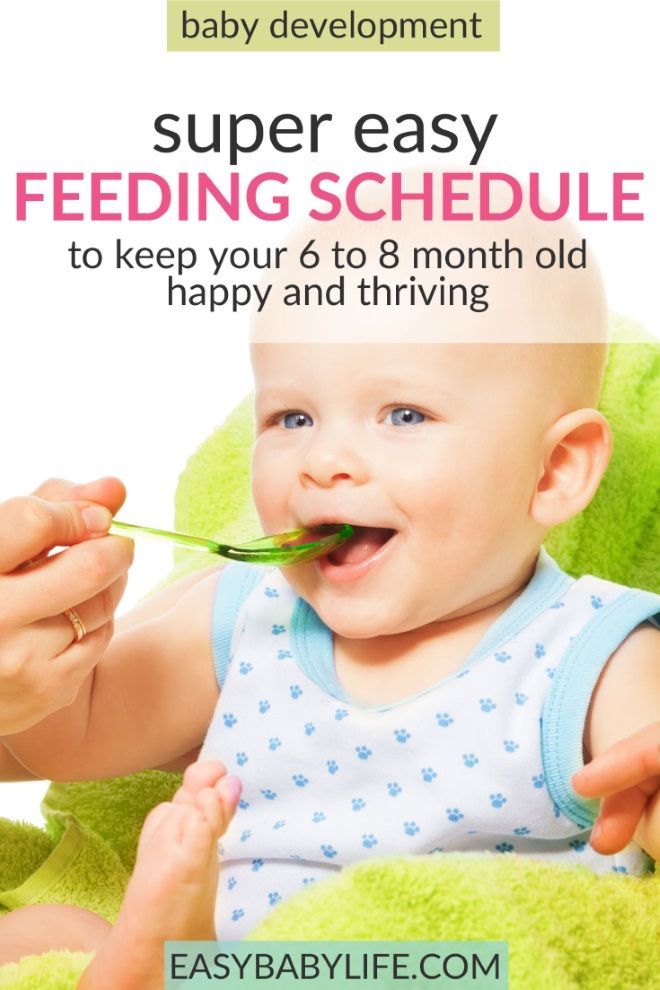
They both struggled over getting their babies to sleep and while Jo believed in sleep training, Rachel looked for alternatives like dream feeding and no cry methods. As time passed and their children grew older the differences started to really add up – pacifier use, drinking during breastfeeding, organic foods, screen time, diaper brands, and on and on.
During this day and age, it’s so easy to look at our parenting differences as a bad thing. After all, we’ve all seen jokes and articles about “Mommy Wars” over one subject or another. Instead, we choose to embrace our differences and show you that in many areas there is no wrong answer. What works for one family may not work for another, and that’s perfectly fine. We can still all get along and raise perfectly healthy, beautiful children.
Related Posts
-
30 July 2019
-
21 June 2019
-
3 September 2021
behind the moms at odds
This site is dedicated to all of us trying to figure this parenting thing out.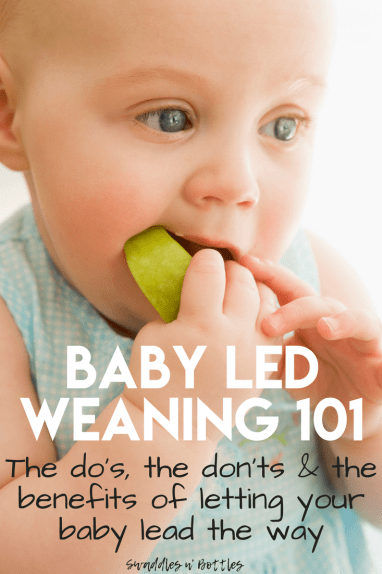 We’re here to explore different parenting methods and decisions, weigh the pros and cons, and ultimately help you decide on the best option for your family. Read more about us here
We’re here to explore different parenting methods and decisions, weigh the pros and cons, and ultimately help you decide on the best option for your family. Read more about us here
Stay Up-To-Date
Top Posts
How to Make the Best Stay at Home Mom Schedule
Are you trying to figure out a stay at home mom schedule that works for you?
Shares: 25560
Birthday Traditions to Make Your Kid Feel Special
Every child deserves to feel special on their birthday! It's never too early to start some annual birthday traditions.
Shares: 17427
Easy & Delicious 2-Ingredient Pumpkin Muffins
If the Thanksgiving holiday has you in the mood for pumpkin or you need a last-minute snack to share, this pumpkin muffins recipe is perfect for you.
Shares: 222524
Search for:Breastfeeding after 1 month: what to expect
Do you know when breast milk production stabilizes? And how does the frequency and duration of feedings change as the baby grows? You will find answers to these questions in our recommendations for breastfeeding after the first month.
Share this information
Congratulations: You made it through the first month of breastfeeding. Your breast milk has reached full maturity 1 , its production stabilizes, and it leaks almost or not at all from the chest. Don't worry, it's not getting less milk, it's just that your breasts are better able to produce and store it now. 2 At the age of six weeks, your baby will begin to please you with his charming toothless smiles, and by two months you will already have 500-600 feedings behind you. With a favorable development of events, problems with latch on by this point will already be resolved, and you can simply enjoy the convenience and benefits of breastfeeding.
When does breastfeeding decrease?
"Normal" feeding frequency for babies aged one to six months varies considerably, with some needing four feedings a day, others asking to be breastfed 13 times a day. 3
“From the age of one month, the amount of milk a baby consumes per feed increases, so that he can go without food for longer,” explains Cathy Garbin, a recognized international expert on breastfeeding, “A baby’s stomach grows, so he eat more at one time. In addition, mature milk allows him to stay full longer.”
In addition, mature milk allows him to stay full longer.”
Feeding can last from 12 minutes to one hour -
the habits of babies vary so much! 3 But if the child is gaining weight and falls within this range, there is no cause for concern.
What is most surprising, no matter how often the baby eats, he consumes approximately the same amount of milk per day - both at one month and at six, when it is time to start complementary foods with solid food. 4
“However, sometimes the baby eats more and sometimes less, especially when he is unwell. It’s better to just listen to his needs,” Katie explains.
Is breast milk enough for the first six months?
Yes. Breast milk contains everything a baby needs for the first 90,023 six months of life—exclusively breastfed babies don't even need to drink more water! 5 Until about six months of age, a child's digestive system is simply not adapted to the digestion of solid food, and he will be able to drink cow's milk only after a year.
In addition, breastfeeding during this period prepares the child for further development. It strengthens the muscles of the mouth, develops the jaw and helps straighten the teeth 6.7 . All this will come in handy when the baby begins to eat and talk. And because what you eat and drink affects how your breast milk tastes, your baby discovers new tastes even before he starts eating solid foods. 8
In addition, when your baby is sick, your body produces breast milk that is
rich in antibodies that help fight infection. 9 In other words, milk continues to protect the baby for many months as he grows and becomes more active.
Breastfeeding is also very comfortable once you get used to it. Claudia, a mother of two from the UK, notes: “No need to sterilize a mountain of bottles, prepare formula, carry it all with you, warm it up - in general, breastfeeding turned out to be very convenient, especially when my babies grew up and we began to leave the house more often. ".
".
At what age does a breastfed baby start sleeping through the night?
Waking up at night is normal for babies. Most babies between the ages of one and six months consume a fifth of their daily milk requirement at night, so nighttime feedings should not be neglected if you want your baby to get the required amount of calories. 3
"It really depends on what you mean by 'sleep through the night'," says Cathy. "And it's better than waking up every two hours anyway! I have met infants who, starting at six weeks old, fell asleep at 19:00 and woke up at 7:00, but most continue to wake up frequently at night after this age. All children are different."
In Wales, a study of more than 700 infants showed that almost 80% of children aged 6 to 12 months wake up at least once a night, and 25% of them wake up three times or more. And it did not depend on what type of feeding the child is on - breastfeeding or artificial. 10
And if nighttime awakenings are unavoidable anyway, breastfeeding is at least comfortable! Maina, a mother of two from Australia, agrees: “You can even take a nap while feeding in the middle of the night - both the body and the baby do their job on autopilot. No need to plan, measure, sterilize anything - ready-made food at the right temperature is right in your chest. I think it's ideal."
No need to plan, measure, sterilize anything - ready-made food at the right temperature is right in your chest. I think it's ideal."
My child wakes up more often. Perhaps he is hungry?
Around four months of age, a baby's sleep patterns change as they develop deep and light sleep phases like an adult. Because of this, he may wake up more often at night. “At four months, sleep is more of a problem than feeding,” Cathy admits. “It can be exhausting, but try to adapt and be patient.”
Some call this " a four-month sleep regression ", but "progress" is more appropriate here. From the outside it may look like a step back, but in fact the child is approaching an important stage of development. He learns quickly, begins to become aware of the world around him, his perception is sharpened and, perhaps, there is anxiety about being separated from his mother. Crying when waking up and being able to eat milk cuddled up to mommy’s chest is a way for a baby to calm down.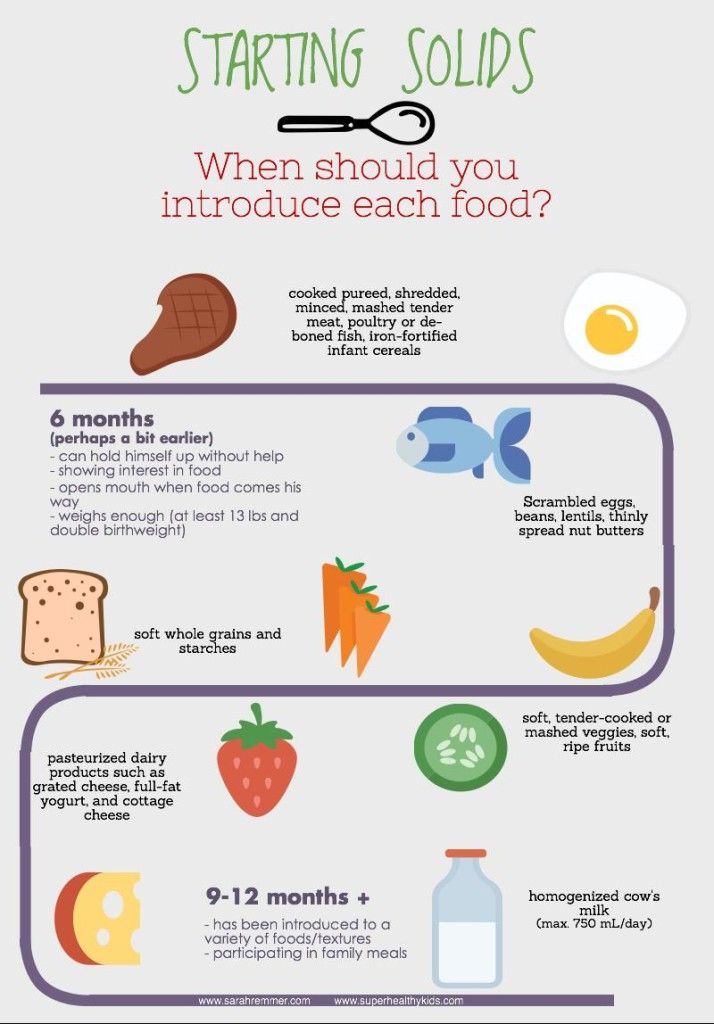 11–13
11–13
Resist the urge to “supplement” your baby with formula or start solid foods early
in an attempt to improve his sleep. Breast milk contains
hormones that make you sleepy and help you both relax
. Research shows that breastfeeding mothers actually sleep longer at night than mothers of formula-fed or mixed-fed babies
. 14
How does teething affect breastfeeding?
Teething usually begins around four months of age. When a baby has gum pain, he becomes restless, throws his chest and cries. All this, of course, is unpleasant.
However, breastfeeding can be an excellent sedative.
Studies have shown that babies who are breastfed
during the vaccination period cry less and forget pain more quickly. 15 Breastfeeding during teething can have the same calming effect.
An unpleasant side effect may be the child's attempts to try out his new teeth on the mother's breast. “Sometimes children flirt and bite their mother’s nipples. This can be felt in advance by how the behavior of the child changes when feeding: before biting, he removes his tongue, explains Cathy, “Usually this is not a problem and only happens a couple of times. It is enough to stop feeding, affectionately say that biting is not good, and the baby will soon leave this fun.
This can be felt in advance by how the behavior of the child changes when feeding: before biting, he removes his tongue, explains Cathy, “Usually this is not a problem and only happens a couple of times. It is enough to stop feeding, affectionately say that biting is not good, and the baby will soon leave this fun.
How to continue feeding if you have to be separated from the baby?
It happens that during the first six months, when the baby is still fully breastfed, the mother needs to be away for several hours - or even longer if she has to go to work or go away on business for a couple of days.
But this does not mean that you should stop breastfeeding. You can still feed your baby healthy breast milk - just express it and have someone give it to your baby when you're away. Here's Katie's advice:
“Start expressing milk a couple of days in advance, in small batches, 40-60 ml at a time. So you will have the necessary supply for the time of your absence, but at the same time the amount of milk produced will remain the same.
If you have to return to work, check with your employer about your daily schedule. Many mothers breastfeed their babies in the morning, evening and night, and pump milk at lunchtime to relieve discomfort and create a reserve for the next day.
This usually turns out to be much easier than one might think, and today many companies are well placed to do this, notes Cathy. “Breast pumps make it easy to solve this problem.”
Natalie, mother from the USA, shares her experience: “I feed Dylan as soon as he wakes up, and sometimes again before leaving for work, in order to maintain milk production and not lose contact with the child. At work, I pump twice the next day (in my absence, he eats two bottles of breast milk), and after work I rush home for the evening feed. I don't pump on the weekends - we resume regular breastfeeding."
Can breastfeeding continue after the introduction of solid foods?
When your baby begins to show interest in food and can sit up on his own - usually around six months of age - it's time to start solid foods. However, it is not necessary to stop breastfeeding, Cathy explains: “A baby’s iron stores during pregnancy are depleted by six months, so he needs additional sources of this element.
However, it is not necessary to stop breastfeeding, Cathy explains: “A baby’s iron stores during pregnancy are depleted by six months, so he needs additional sources of this element.
Start complementary foods with solid foods, but remember that breast milk remains a more important source of calories and nutrients until the baby is eight to nine months old. By this time, he will be eating much more solid food, but he will still need to breastfeed four to five times a day. By 12 months, the frequency of feeding may be two to six times a day. All babies are different, and many of them at this age are still getting half their daily calorie intake from breast milk.”
Don't forget that breast milk can be added to solid foods, such as cereals and purees, so that the baby can taste the familiar taste. If possible, use milk expressed just before feeding (not thawed) and add just before serving to keep bacteria and nutrients alive. 16
You may be pressured by others to stop breastfeeding when your baby is six months old, but the longer you breastfeed or pump milk, the better for you and your baby.
How long can I continue breastfeeding?
“The World Health Organization recommends breastfeeding along with solid foods until at least two years of age because it plays an important role in supporting immunity,” says Cathy. feels bad".
At eight months, the baby sometimes breastfeeds four times a day, but by one year old, the frequency of feedings can be reduced to two times a day. You yourself will understand which feeding regimen is more suitable for you and your baby. For example, Jane, a mother of two from the US, breastfed until the age of two: “I breastfed when I was at home - in the evenings and on weekends, when the children wanted to be close to me,” says Jane, “It helped a lot when they were sick . Breastfeeding has become my favorite form of comfort."
“When my son got a little older and bolder, he still often asked me to breastfeed him - as if to calm down and gain strength,” recalls Amy, a mother of two children from Canada, “When he happened to hit or skin his knee , breastfeeding was a wonderful way to comfort him. ”
”
If your baby is over a year old and you are still breastfeeding, people around you will probably tell you that this way he will never wean. But if children are not pressured, they usually refuse to breastfeed themselves between the ages of two and four. 17
“I didn’t intend to breastfeed for so long, but as a result, I still breastfeed my four-year-old daughter and 22-month-old son,” says Suzanne, mother of two from the UK, “I breastfeed my youngest before and after work, and in I express milk on business trips. The eldest daughter likes to breastfeed a little before bed or when she is upset - this is a great way to make contact. When I get tired of it, I remind myself what great benefit and comfort it brings them. I now plan to pursue a baby-initiated end breastfeeding strategy — let them decide when to stop.”
For more information on what to expect and lots of tips and tricks, see our guide Breastfeeding Problems After the First Month.
Literature
1 Ballard O, Morrow AL. Human milk composition: nutrients and bioactive factors. Pediatr Clin North Am . 2013;60(1):49-74. - Ballard O., Morrow A.L., "Composition of breast milk: nutrients and biologically active factors." Pediatrician Clean North Am. 2013;60(1):49-74.
Human milk composition: nutrients and bioactive factors. Pediatr Clin North Am . 2013;60(1):49-74. - Ballard O., Morrow A.L., "Composition of breast milk: nutrients and biologically active factors." Pediatrician Clean North Am. 2013;60(1):49-74.
2 Kent JC et al. Principles for maintaining or increasing breast milk production. J 2012;41(1):114-21. - Kent J.S. et al., "Principles for Maintaining and Increasing Milk Production". J Obstet Ginecol and Neonatal Nurse. 2012;41(1):114-121.
3 Kent JC Volume and frequency of breastfeedings and fat content of breast milk throughout the day. Pediatrics. 2006;117(3): e 387-395. - Kent J.S. et al., "Amount and frequency of breastfeeding and fat content of breast milk during the day." Pediatrix (Pediatrics). 2006;117(3):e387-95.
2006;117(3):e387-95.
4 Kent JC et al. Longitudinal changes in breastfeeding patterns from 1 to 6 months of lactation. Breast Med . 2013;8(4):401-407. - Kent J.S. et al., Longitudinal changes in breastfeeding patterns from 1 to 6 months of lactation. Brest Med. 2013;8(4):401-407.
5 Almroth S, Bidinger PD. No need for water supplementation for exclusively breast-fed infants under hot and arid conditions. Trans R Soc 1990;84(4):602-604. - Elmroth S., Bidinger P.D., "No need for supplementation of exclusively breastfed infants in hot, dry conditions." Trans R Sots Trop Med Hyg. 1990;84(4):602-604.
6 Victora CG et al . Breastfeeding in the 21st century: epidemiology, mechanisms, and lifelong effect. Lancet. 2016;387(10017):475-490. - Victor S.J. et al., "Breastfeeding in the 21st century: epidemiology, mechanisms and long-term effects". Lancet 2016;387(10017):475-490.
- Victor S.J. et al., "Breastfeeding in the 21st century: epidemiology, mechanisms and long-term effects". Lancet 2016;387(10017):475-490.
7 Peres KG et al. Effect of breastfeeding on malocclusions: a systematic review and meta - analysis. Acta Paediatr. 2015;104( S 467):54-61. - Perez K.G. et al., "The impact of breastfeeding on malocclusion: a systematic review and meta-analysis". Akta Pediatr. 2015;104(S467):54-61.
8 Mennella JA, Beauchamp GK. Maternal diet alters the sensory qualities of human milk and the nursling's behavior. Pediatrics. 1991;88(4):737-744. - Mennella, JA, Beauchamp, GK, "Maternal nutrition influences the organoleptic properties of breast milk and infant behavior." Pediatrix (Pediatrics). 1991;88(4):737-744.
9 Hassiotou F et al. Maternal and infant infections stimulate a rapid leukocyte response in breastmilk.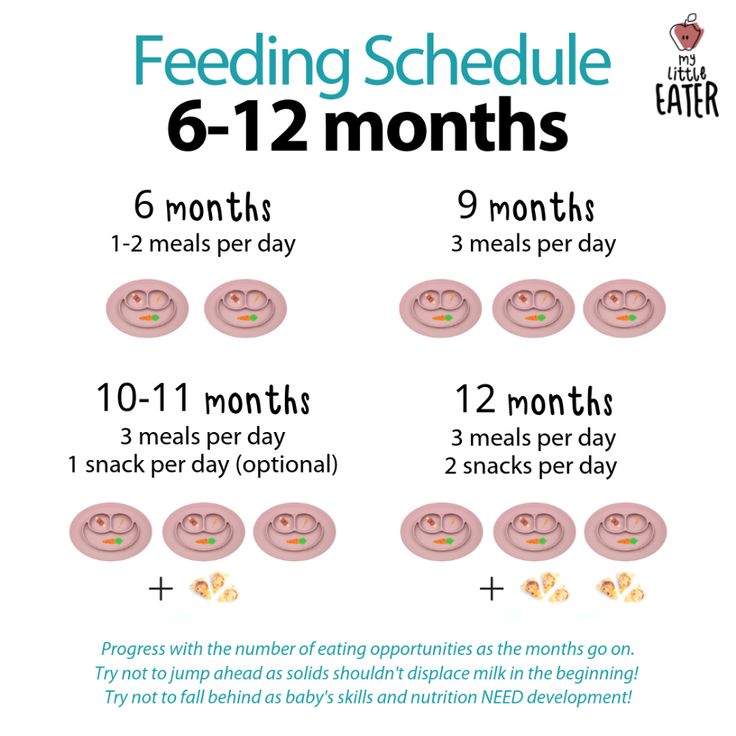 Clin Transl immunology. 2013;2(4). - Hassiot F. et al., "Infectious diseases of the mother and child stimulate a rapid leukocyte reaction in breast milk." Clean Transl Immunology. 2013;2(4).
Clin Transl immunology. 2013;2(4). - Hassiot F. et al., "Infectious diseases of the mother and child stimulate a rapid leukocyte reaction in breast milk." Clean Transl Immunology. 2013;2(4).
10 Brown A, Harries V. Infant sleep and night feeding patterns during later infancy: Association with breastfeeding frequency, daytime complementary food intake, and infant weight. Breast Med . 2015;10(5):246-252. - Brown A., Harris W., "Night feedings and infant sleep in the first year of life and their association with feeding frequency, daytime supplementation, and infant weight." Brest Med (Breastfeeding Medicine). 2015;10(5):246-252.
11 Infant sleep information source. [Internet]. Normal Infant Sleep Development; December 2017 [cited 2018 Feb] - All about baby sleep. [Internet] "The development of normal sleep in a child", December 2017 [cited February 2018].
12 Baby sleep science. [Internet]. The-Four-Month-Sleep-Regression-What-is-it-and-What-can-be-Done-About-it. March 2014 [ cited 2018 Feb ] - The science of baby sleep. [Internet], "Four-month sleep regression: what it is and what to do about it." March 2014 [cited February 2018].
13 The Myth Of Baby Sleep Regressions – What’s Really Happening To Your Baby’s Sleep? [Internet]. Pinky Mckay ; December 2017 [ cited 2018 Feb ] - "The Myth of Baby Sleep Regression - What's Really Happening to Your Baby?" [Internet]. Pinky McKay, December 2017 [cited February 2018].
14 Kendall - Tackett K ET Al . The effect of feeding method on sleep duration, maternal well-being, and postpartum depression. Clinical Lactation . 2011;2(2):22-26. - Kendall-Tuckett K. et al., "Influence of feeding pattern on sleep duration, maternal well-being and the development of postpartum depression." Clinical Lactation. 2011;2(2):22-26.
Clinical Lactation . 2011;2(2):22-26. - Kendall-Tuckett K. et al., "Influence of feeding pattern on sleep duration, maternal well-being and the development of postpartum depression." Clinical Lactation. 2011;2(2):22-26.
15) Harrison D et al. Breastfeeding for procedural pain in infants beyond the neonatal period. Cochrane Database Syst Rev . 2014;10. — Harrison D. et al., "Breastfeeding for Relief of Medical Pain in the Neonatal Period." Cochrane Database of System Rev. 2014;10:CD11248
16 Czank C et al. Retention of the immunological proteins of pasteurized human milk in relation to pasteurizer design and practice. Pediatr Res . 2009;66(4):374. - Zhank S. et al., "Retention of immunological proteins in pasteurized milk depending on the technique and practice of pasteurization". Pediatrician Res. 2009;66(4):374.
Pediatrician Res. 2009;66(4):374.
17 Weaning from the breast. (2004). Paediatr Child Health, 9(4):249–253. - "Weaning from the breast" (2004). Pediatrician Child Health, 9(4):249–253.
Introducing solid foods to your baby: how to teach your baby to chew - Parents.ru
About nutrition
- Photo
- Getty Images/E+
Pediatrician at Human Health Children's Medical Center
When to start introducing solid foods -8 months. In fact, age in the development of chewing skills is not the main thing. The baby should be ready for the introduction of solid foods both physically (to be able to actively work with the tongue and press it correctly against the palate) and psychologically: food interest should “wake up”, the desire to look into the parent’s plate and try what adults eat.

“The appearance of the first chewing movements occurs at 4–5 months, at the same time the gag reflex moves from the middle to the back third of the tongue,” says pediatrician Yulia Rakhimbekova. - And if during this period you do not introduce complementary foods, but continue to stimulate only the sucking reflex, then the chewing reflex that is not supported by practice will begin to fade. A few years ago, the baby, before the appearance of the first milk teeth, received drying, crackers or even a chicken bone from his mother and learned to “chew” with his gums. Today, parents often introduce complementary foods after 6 months and later, when 2-4 front teeth have already appeared in the mouth. But these teeth are used for biting, it is impossible to chew them, and - what is important! - they prevent the baby from chewing with their gums. This is how the moment is lost. Further, normally at the age of 7-12 months, the child continues to strengthen the skills of biting and chewing, developing lateral movements of the tongue and the ability to move food to the teeth with the tongue. He is already able to eat cereals, chopped fruits and vegetables. Of course, everything is individual. Full-term or premature, healthy or with health problems, have teeth or have not yet appeared - one way or another, by the year the baby should produce high-quality chewing movements with the jaws. But this will only happen if the parents gradually taught him this. It does not happen that a child is fed only breast milk, but at the age of one he sat down at the table, took a spoon and began to eat busily from the common table.
He is already able to eat cereals, chopped fruits and vegetables. Of course, everything is individual. Full-term or premature, healthy or with health problems, have teeth or have not yet appeared - one way or another, by the year the baby should produce high-quality chewing movements with the jaws. But this will only happen if the parents gradually taught him this. It does not happen that a child is fed only breast milk, but at the age of one he sat down at the table, took a spoon and began to eat busily from the common table.
If the baby is over two years old, and he is accustomed to pureed food, chews reluctantly or does not know how to chew at all, please be patient: to catch up you will need time - from a month to six months.
Why you need to learn to chew before the age of
The ability to chew solid food is absolutely necessary for a child:
-
for strong teeth
The inability and unwillingness of the baby to chew solid pieces of food leads to a violation of the formation of bite, and subsequently - the oval of the face. Milk teeth are not sufficiently stressed and may fall out prematurely.
Milk teeth are not sufficiently stressed and may fall out prematurely.
The use of products mainly in a puree-like state negatively affects the functioning of the gastrointestinal tract: it provokes the appearance of allergies, intestinal disorders, bloating, and constipation. Since the food that you just need to swallow does not mix well with saliva, the baby's digestive enzymes are poorly produced. The gastrointestinal tract becomes "lazy", receiving only tender food, which is no longer for the child's age. As a result, problems grow like a snowball: underdevelopment of the enzyme apparatus, excess weight, increased sensitivity of the intestine.
“The inability to chew is not the direct cause of speech delay or lack thereof,” says speech therapist Tamara Novikova. “At the same time, this is an indicator of negative changes in articulatory tone. It is likely that the child will be uncomfortable, uncomfortable pronouncing some sounds, because this also requires efforts.
“Until the age of 1.5, we ate only pureed food, as we choked on pieces. It didn’t bother me at all: 15 seconds in a blender - and you’re done. To be honest, it was even more convenient for me, because it was faster and easier to feed. Only now he refuses to eat meat ”- a similar story can be found on any parent forum. Many mothers feel sorry for their babies (and themselves) by giving them pureed food. But the age of 1–2 years is quite dangerous in terms of manipulating a child with parental opinion. Make every effort to ensure that the little one cannot blackmail you with his unwillingness to chew and swallow hard pieces, because in the future this can turn into much more problems.
Food "pieces" should appear in the children's diet no later than the first tooth erupts. The ability to chew well is the key to healthy teeth and clear articulation.
Why a baby refuses to chew
- Photo
- Getty Images/Westend61/Sebastian Rothe
Situations when the baby refuses to chew happen quite often.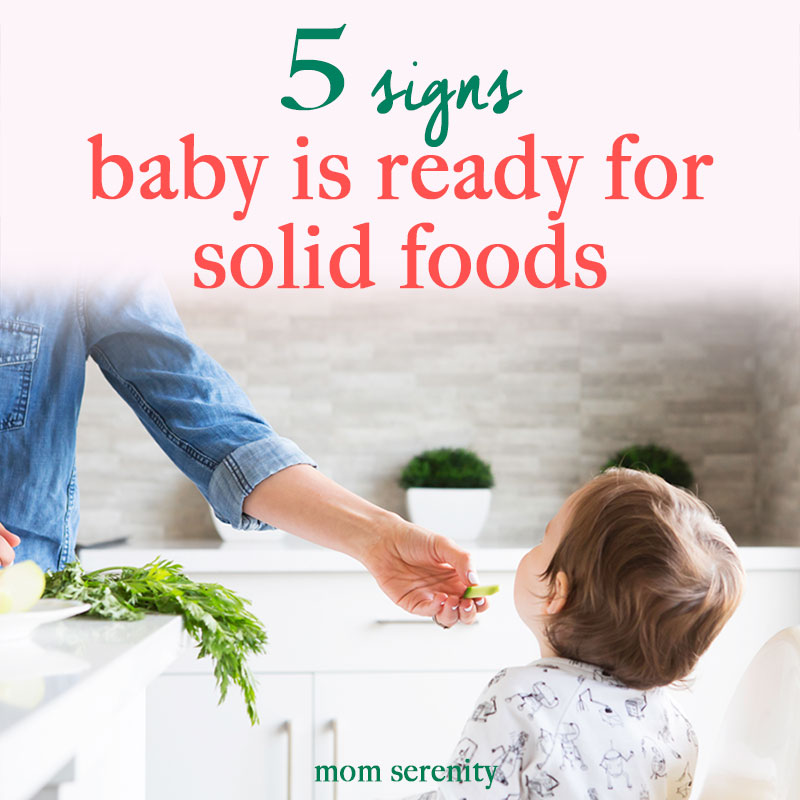 Why is this happening?
Why is this happening?
Too early or abrupt change in food consistency
Do not immediately switch from homogeneous puree to food in pieces: at first the baby may simply not understand that it is also edible, and the absence of "normal", from his point of view, food will make him nervous. The logical result of this is streams of tears and a tightly compressed mouth. Do not worry! Each baby has its own pace of development and maturation of body systems. If you have introduced solid foods according to all the rules, and the baby stubbornly refuses “solid” foods, consult a specialist (pediatrician, gastroenterologist, neurologist).
Disorders of articulatory tone
“The conditions in which a woman today carries and gives birth to a child are far from ideal,” explains speech therapist Tamara Novikova. - A large percentage of expectant mothers work to the last, exposing themselves to stress and hypoxia, drive a car, do not always give up bad habits - all this indirectly affects the development of dysarthria (impaired tone of the muscles of the speech apparatus) in the child in the future, because a weakened fetus is already forming in utero . What do we get next? A tongue that cannot turn food over in the mouth, poor functioning of the muscles that close, raise and lower the jaw, and an unwillingness to chew. Parents who give up breastfeeding too early also do a disservice to the baby. To get milk from the mother's breast, the baby needs to work hard - work his muscles. With a regular bottle, articulatory tone is much more difficult to develop. Nevertheless, all these difficulties can be overcome.
What do we get next? A tongue that cannot turn food over in the mouth, poor functioning of the muscles that close, raise and lower the jaw, and an unwillingness to chew. Parents who give up breastfeeding too early also do a disservice to the baby. To get milk from the mother's breast, the baby needs to work hard - work his muscles. With a regular bottle, articulatory tone is much more difficult to develop. Nevertheless, all these difficulties can be overcome.
Physiological problems
The baby may refuse to chew even if it is difficult for him to swallow. Trying to cope with solid food can cause him to cough and even vomit. Swallowing disorders may be associated with malfunctions of the gastrointestinal tract or other diseases: for example, tonsillitis, pharyngitis, stomatitis, inflammation of the oral cavity and larynx. “Possible problems that can interfere with high-quality chewing will definitely show up during the child’s medical examination,” pediatrician Yulia Rakhimbekova reassures. - Do not neglect the dispensary appointments of doctors. Up to a year, a child should visit the dentist twice, 4 times - at the neurologist, 3 times - at the surgeon. If necessary (for example, there is a suspicion of a short frenulum of the tongue), the baby can be referred for a consultation with an oral and maxillofacial surgeon.
- Do not neglect the dispensary appointments of doctors. Up to a year, a child should visit the dentist twice, 4 times - at the neurologist, 3 times - at the surgeon. If necessary (for example, there is a suspicion of a short frenulum of the tongue), the baby can be referred for a consultation with an oral and maxillofacial surgeon.
How to introduce solid food to your baby
There is no special technique for teaching chewing, because everything should go on as usual. However, with the help of our tips, you will help your baby master this skill faster.
- Photo
- Getty Images/Foodcollection
-
Organize a space. Think in advance where the baby will feel most comfortable: in a high chair or on your lap.
-
Pick a moment. It is important that the child is not too hungry - otherwise he will be nervous, and your efforts will go down the drain, but at the same time he wants to eat.

-
Prepare cutlery. Use a light plastic spoon with a rounded handle for feeding - then the baby can use it independently.
-
Consider your diet. “We usually advise mothers to offer their babies pieces of an apple or soft biscuits that they will bite into and thus learn to chew. An inquisitive kid will definitely agree to taste a new product, and at the same time understand why he needs his teeth, and practice chewing movements, says Yulia Rakhimbekova. “Any dish that you think is appropriate at the moment will do, considering whether it’s part of dinner, a snack between meals, or a dessert after a hearty meal.” When buying a jar of puree, be guided by the markings on the label: among the jars recommended for the age of 8-10 months, you will definitely find those that say "pieces that teach you to chew."
-
Take your time. Start small meals. If the baby refuses a new complementary food, do not insist.
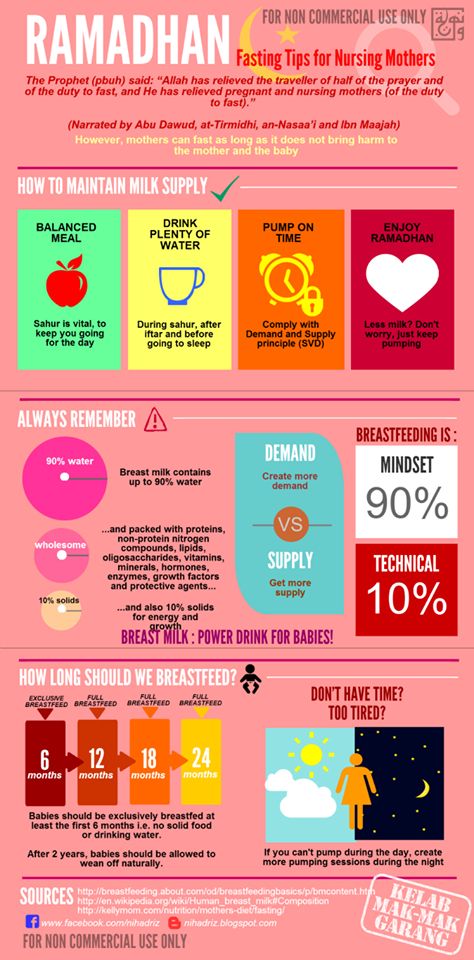 Make the consistency of the offered dishes thicker over time - thanks to this, the need to work with the jaws, lips, and tongue develops. If the dish is too thick, add some water or milk.
Make the consistency of the offered dishes thicker over time - thanks to this, the need to work with the jaws, lips, and tongue develops. If the dish is too thick, add some water or milk. -
Use his curiosity. At 4-7 months, your baby will be persistently procrastinating in his mouth and trying to chew whatever you give him. Your job is to make sure it's safe. The main thing is to avoid sudden transitions in the diet: you should not give hard carrots if before that the baby ate only ground cereals and mashed potatoes.
-
Do not disturb. Let the baby focus on the process of eating, then the actions of the hands, tongue and lips will be coordinated as much as possible.
Mom's helper: nibbler
Nibbler is a device reminiscent of the methods of our grandmothers, when some product (an apple or a lump of sugar) was wrapped in gauze and a child without danger to life could procrastinate it in his mouth for a long time. Nibbler promotes the taste of the product, activates salivation and trains chewing movements. The main thing is to monitor the integrity of the mesh and rinse it thoroughly after use.
Nibbler promotes the taste of the product, activates salivation and trains chewing movements. The main thing is to monitor the integrity of the mesh and rinse it thoroughly after use.
How to overcome dislike for solid food
- Photo
- Getty Images/Tetra images RF
“If parents delay the transition of the child to solid food, as a rule, problems begin,” says Yulia Rakhimbekova. - Even a two-year-old baby's eating behavior is already formed, it becomes very difficult to teach him to chew and just make him take something unusual in his mouth. The main advice in this case is not to rush, not to pressure and in no case starve (they say, nothing, get hungry - eat). The transition from pureed food to "pieces" should be gradual. Involve the child in cooking, chop the product together, first in a blender, using a meat grinder or grater, a little later with a fork. Remember that children are very fond of imitating, so be sure to practice “joint dining”, where you will chew food together with great pleasure.
Remember that children are very fond of imitating, so be sure to practice “joint dining”, where you will chew food together with great pleasure.
What else can help you teach your little one to chew cheerfully and with appetite:
-
Lay out a “rainbow” on a plate, fold “houses”, “draw” animals from slices of boiled carrots, beans, broccoli and cauliflower, fresh cucumbers and tomatoes. If at first the baby does not chew very well, just feed him with the usual pureed food. Try to cut into pieces first of all the foods that he likes the most.
-
Add small-small pieces of soft fruits (for example, pears), boiled vegetables, berries (raspberries) to cereals and purees. Gradually increase the size and number of pieces in the dish.
-
Play. Take, for example, a piece of boiled carrot and depict a bunny: “How does a hare eat a carrot? Like this! Can you do that?"
-
Invite guests and also eat out - practice situations where the ability to grind food simply will not be.




